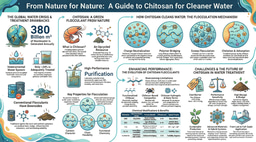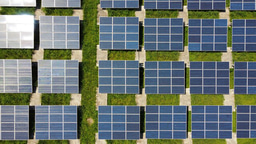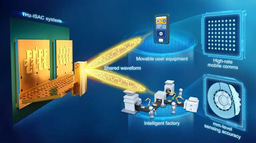A Household Arsenic Solution for Pennies on the Dollar
Published in Earth & Environment

Millions of rural households which use groundwater for drinking are exposed to arsenic with dire health consequences.1,2 Efforts to reduce this exposure by water treatment have been a major focus in water research. At present, adsorbents can effectively remove arsenate from water, but their adsorption capacity for highly toxic arsenite is relatively small. In community water treatment processes, arsenite is oxidized to arsenate with sodium hypochlorite prior to adsorption or coagulation treatment. However, it is not practical to use liquid oxidants in point-of-use (POU) filtration systems that are preferrable for individual households. Our latest research, outlined in MnO2-modified activated carbon and granular nano-TiO2 in tandem succeed in treating domestic well water arsenic at point of use, demonstrates that removal of arsenite and arsenate can be successful at the POU using an in-tandem configuration of three filters consisting of a solid oxidant, that being manganese oxide-modified activated carbon (MnO2-AC), followed by a granular nano-titanium oxide (GTO) to adsorb arsenic, and a compressed AC filter to remove any particles. Long term deployment of two POU units built with components costing < US $30 in a suburban home in New Jersey and a rural home in China supplied arsenic safe water, much cheaper than a point-of-entry (POE) unit usually costing thousands of dollars.
A Compact Water Treatment Unit
The POU filters proved capable of removing not only arsenate, but especially arsenite, as opposed to other household arsenic removal technologies. At present, the state of New Jersey recommends large POE filtration systems with two tanks each containing granular ferric-based (iron-based) adsorption media, which often involves a pre-oxidation step owing to their low capacity for arsenite.3
The novelty of our compact POU system lies in the quick oxidation of arsenite by MnO2-AC in the first filter, converting arsenite to the more reliably adsorbed (and thus, removed) arsenate, trapping arsenic within successive filters through a variety of mechanisms.
The second GTO filter had the primary function of adsorption: it was within this filter that arsenic was contained, alongside excess manganese that had been released into the system captured so as not to contaminate the outflow. The majority of the removed arsenic was trapped within the GTO.
Much of the removed arsenic was noted to be arsenate, indicating that the initial oxidation phase was effective in converting arsenite into arsenate. Additionally, GTO adsorbs arsenic in such a way that breaking it out is extremely unlikely.
A side-effect of using manganese oxide as an oxidant is that as it is consumed oxidizing various incoming species such as arsenite and iron (II), manganese (II) ions are released into the water, where they must be contained so as not to pose a health risk of their own. For this, the GTO’s secondary purpose was to prevent the leaching of manganese into the treated water. Thankfully, both deployments demonstrated extreme effectiveness in GTO’s capacity to adsorb manganese. An interesting quirk of the arrangement means that detection of a manganese breakthrough is also an indicator of a potential arsenic breakthrough.
A Low-Cost Solution
Thanks in large part to the simplicity of our system, it can be installed quite readily at the point-of-use with minimal maintenance requirements, with the requisite filter cartridges and assorted holders and plumbing accessories only having a total cost of US $18-29, and cost per liter of As-safe water being no more than 1.38 cents/L (~0.36 cents/gallon).
There are no liquid chemicals involved, merely cartridges that need to be replaced when arsenic concentrations breach the WHO guideline value of 10 micrograms per liter. Thanks to the simultaneous breakthrough of manganese and arsenic, manganese concentrations can be used as an indicator for necessary replacement, which allows for cheaper monitoring, seeing as on-site manganese tests are cheaper than on-site arsenic tests. Of course, once there are signs of manganese breakthrough, laboratory testing is needed for arsenic to ensure safety before and after filter replacement.
Filter Costs for Installation and Maintenance
|
Treatment Type |
First-Time Installation Cost (US Dollars) |
Maintenance Cost per Year (US Dollars) |
Other Notes |
|
Whole house POE adsorption |
$2,4953 |
~$3003 |
All arsenic removed, treats all water in home |
|
POU adsorption |
$8353 |
~$1003 |
Cheaper than POE, likely to fail for arsenite |
|
This POU (Tandem oxidation/adsorption) |
$18-29 |
$11-14 |
Extremely cheap, pre-oxidizes arsenite for quicker removal |
POE and alternative POU data sourced from New Jersey Geological and Water Survey Information Circular: “Arsenic Water Treatment for Private Wells in New Jersey”
The Way Forward
Given the overall user-friendliness and competitive cost advantage, we are cautiously optimistic that this filter design, with further engineering improvements, will be able to provide arsenic safe water for the millions of rural residents in low-income communities. We are now one step closer to realizing the vision of a world where no one must drink arsenic-contaminated water. Given the hidden costs of multi-faceted health effects arsenic has, the investment on arsenic treatment is worth it, and is now also one step closer to pennies on the dollar.
We would like to call for a requirement that novel groundwater treatment technologies be tested in real-world situations for sustained periods of time before certification. The testing and certification services of the National Sanitation Federation (NSF) of the United States do not require it.
The results of our long-term tests indicate a stark decrease in maximum loading capacity, owing to complex and variable water chemistry from real groundwater that is difficult to mimic in laboratory testing. It is this discrepancy that we would like to use as support for the idea that in addition to laboratory or rapid small scale column tests, long-term investigations should be undertaken to truly demonstrate the actual capabilities of treatment technologies in real-world scenarios, before they are released commercially.
To conclude, geogenic arsenic in well water is forever, but our exposure to it need not be.1,2
References
1 Zheng, Y. Global solutions to a silent poison. Science 368, 818-819, doi:10.1126/science.abb9746 (2020).
2 Podgorski, J. & Berg, M. Global threat of arsenic in groundwater. Science 368, 845-850, doi:10.1126/science.aba1510 (2020).
3 Spayd, S. Arsenic Water Treatment for Private Wells in New Jersey. New Jersey Geological and Water Survey, Information Circular, doi:https://www.nj.gov/dep/njgs/enviroed/infocirc/ArsenicMainICv1.pdf (2023).
Follow the Topic
-
Nature Water

This journal publishes research on the evolving relationship between society and water resources on a monthly basis. It covers the natural sciences, engineering, and social sciences, with a particular interest in regards to interdisciplinary research.
Related Collections
With Collections, you can get published faster and increase your visibility.
Water pollution and advanced treatment processes
Publishing Model: Hybrid
Deadline: Feb 28, 2026
Remote sensing and forests
Publishing Model: Hybrid
Deadline: Jan 31, 2026




Please sign in or register for FREE
If you are a registered user on Research Communities by Springer Nature, please sign in